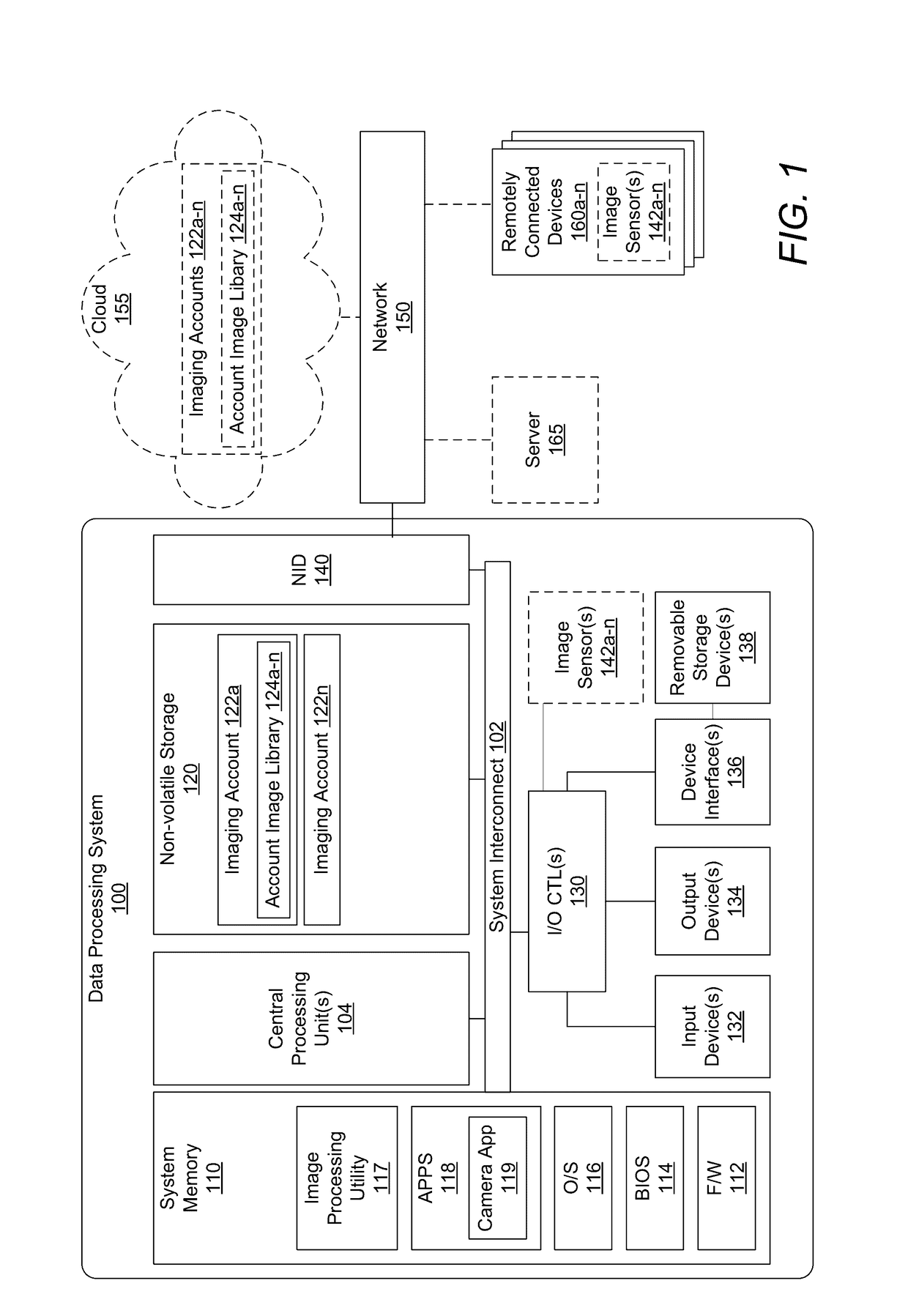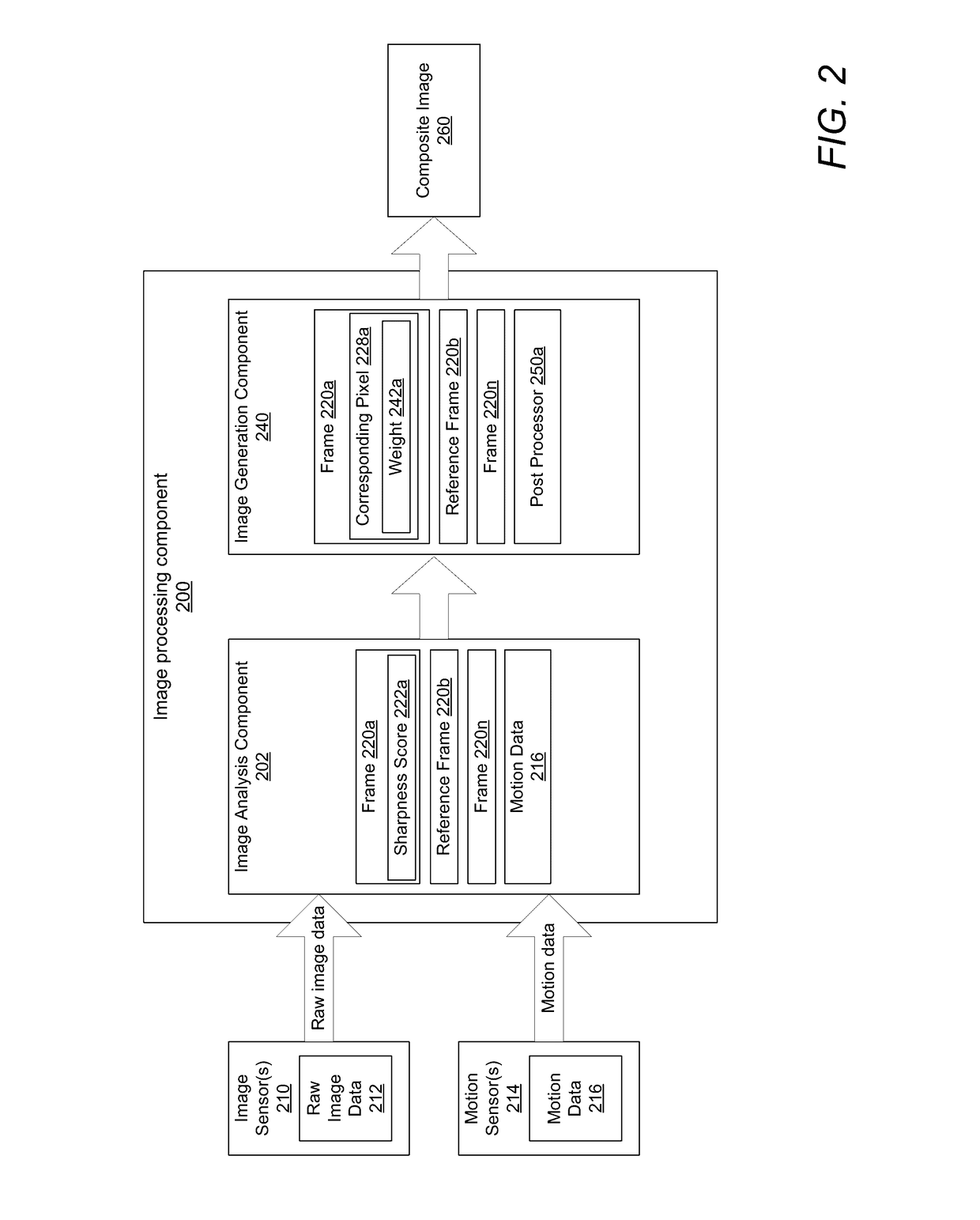Creating a composite image from multi-frame raw image data
- Summary
- Abstract
- Description
- Claims
- Application Information
AI Technical Summary
Benefits of technology
Problems solved by technology
Method used
Image
Examples
Embodiment Construction
[0010]The illustrative embodiments provide a method, a system, and computer program product for creating a composite image from multi-frame raw image data. The method includes extracting each individual frame from a plurality of frames within raw image data and determining a sharpness score for a region of each individual frame. A particular frame that has a sharpest region from among the plurality of frames is then selected as a reference frame. A correspondence is then determined between each pixel in the reference frame and a plurality of pixels from non-reference frames among the plurality of frames. Pixels in the non-reference frames are then registered with a corresponding pixel in the reference frame. Equivalent pixels from the reference frame and each non-reference frame are then summed to create a composite image.
[0011]In one embodiment, the method includes identifying a second pixel in at least one non-reference frame that corresponds to a first pixel in the reference fram...
PUM
 Login to View More
Login to View More Abstract
Description
Claims
Application Information
 Login to View More
Login to View More - R&D
- Intellectual Property
- Life Sciences
- Materials
- Tech Scout
- Unparalleled Data Quality
- Higher Quality Content
- 60% Fewer Hallucinations
Browse by: Latest US Patents, China's latest patents, Technical Efficacy Thesaurus, Application Domain, Technology Topic, Popular Technical Reports.
© 2025 PatSnap. All rights reserved.Legal|Privacy policy|Modern Slavery Act Transparency Statement|Sitemap|About US| Contact US: help@patsnap.com



